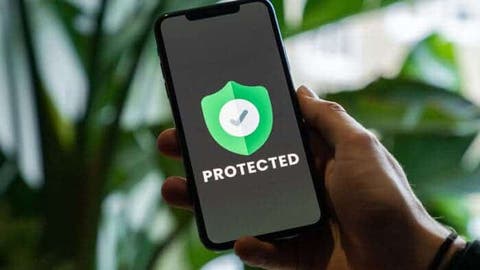Encountering a fraudulent link through SMS, WhatsApp, email, or other means is an unfortunate reality for many smartphone users. If you find yourself in this situation, it’s important to stay calm and take the right steps to mitigate potential damage. This guide provides a comprehensive overview of what actions to take depending on your interaction with the fraudulent link.
What to Do If You’ve Clicked on a Fraudulent Link on Your Android Phone
If You Have Not Interacted with the Link
Many fraudulent links lead to phishing websites that mimic legitimate sites. But are designed to deceive users into providing sensitive information. If you simply opened the link and saw a suspicious website—perhaps one pretending to be your bank or a government service—closing the site immediately is usually sufficient. These sites are primarily designed to trick you into interacting with them. Unless you engaged with the site or entered any personal information, your phone and data are not at immediate risk from just visiting the site.
If You Entered Personal Data
If you have entered any personal information, such as bank credentials or other sensitive data, on the fraudulent website, immediate action is required. Phishing sites aim to capture this information for malicious use. Here’s what you should do:
- Change Your Passwords: If you entered usernames, passwords, or bank details, change your passwords for all affected services immediately. Use strong, unique passwords for each account.
- Notify Your Bank: If you provided bank information, contact your bank right away to report the potential compromise. They may monitor your account for suspicious activity and guide you on further steps, such as issuing a new card.
- Monitor Your Accounts: Regularly check your bank statements and online accounts for any unauthorized transactions or changes. Report any suspicious activity to your bank or service provider.
If You Made a Payment or Transfer
If you made a payment or transfer through the fraudulent website, the situation becomes more complex. Fraudulent transactions can be challenging to reverse, but you should take the following steps:
- Contact Your Bank: Inform your bank of the transaction as soon as possible. They may be able to block the card or account used and initiate a refund or dispute process.
- File a Police Report: Report the incident to the police. A police report can be crucial for recovering funds and for insurance claims if applicable.
- Follow Up. Keep in touch with your bank and the police to follow up on the investigation and any potential recovery of funds.
If You Downloaded and Installed Malicious Software
Some fraudulent websites prompt users to download and install malicious applications. These apps can have severe consequences, such as intercepting verification codes or accessing sensitive information. Here’s what to do if you’ve installed such an app:
- Uninstall the App: If you haven’t opened the app, simply uninstall it from your device. If you’ve opened it, there may be further actions needed.
- Change Your Passwords: Update your passwords for key accounts, especially those related to online banking or sensitive information.
- Consider a Factory Reset. If you suspect the app may have compromised your device, performing a factory reset might be necessary. This will remove all data and apps from your phone, restoring it to its original state.
- Check for Malicious Activity: After uninstalling the app or performing a reset, monitor your accounts and phone for any unusual activity.
General Precautions
Regardless of your specific situation, reporting the fraudulent message can help prevent future incidents. Most messaging apps, including Google Messages and WhatsApp, offer options to report spam or phishing attempts. Reporting helps improve spam detection systems and protects other users from similar threats.
By following these guidelines, you can take effective action to safeguard your information and minimize the potential damage from encountering fraudulent links. Always remain vigilant and adopt best practices for online security to protect yourself from future threats.
How to Avoid Falling Victim to Phishing Scams
Phishing scams are becoming increasingly sophisticated, but there are steps you can take to protect yourself. Here’s a guide:
1. Be Skeptical of Unexpected Links:
- Verify the Source: Always check the sender’s address and the link’s destination.
- Hover Over Links: Before clicking, hover over a link to see its actual URL.
2. Use Security Tools:
- Enable Safe Browsing: Turn on your browser’s built-in protection.
- Install Antivirus Software: Keep your device safe from malware.
3. Keep Your Software Updated:
- Check for Updates: Regularly update your operating system, browser, and apps.
- Set Automatic Updates: Let your devices do the work for you.
4. Protect Your Passwords:
- Use Strong, Unique Passwords: Avoid using the same password for multiple accounts.
- Enable Two-Factor Authentication: Add an extra layer of security.
5. Be Cautious with Personal Information:
- Avoid Sharing Sensitive Data: Only provide information on trusted websites.
- Look for “https”: Ensure the website is secure.
6. Report Suspicious Activity:
- Notify the Platform: If you encounter a phishing scam, report it to the relevant service.
- Warn Others: Let your friends and family know about the scam.
7. Monitor Your Accounts:
- Review Statements: Check your accounts regularly for unauthorized activity.
- Set Up Alerts: Get notified of suspicious transactions.
8. Stay Informed:
- Learn About Scams: Keep up-to-date on the latest phishing tactics.
- Educate Others: Help your loved ones stay safe online.
9. Be Careful with App Permissions:
- Review Permissions: Only grant necessary permissions to apps.
- Download from Trusted Sources: Get apps from reputable app stores.
10. Use a Password Manager:
- Store Passwords Securely: A password manager can help you create and manage strong, unique passwords.
By following these tips, you can significantly reduce your risk of falling victim to phishing scams and protect your personal information.
